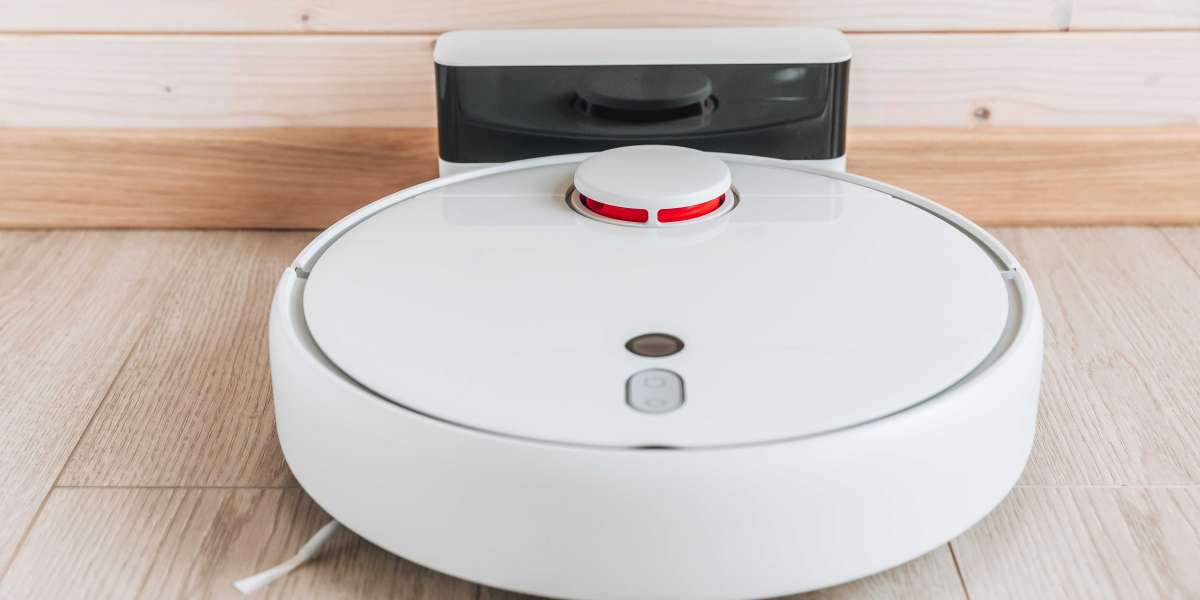How to Maintain a Robot Vacuum and Mop
A robot vacuum and mop will help you keep your floors spotless on regular basis. Set it to run on a schedule and you'll be able to return home to sparkling floors without any effort on your part.
Most robot vacuums that also mop can be controlled and scheduled via an app. Some feature a self-emptying dust bin, and a lot of them have microfibre pads which can be washed or replaced at will.
1. Easy to use
Robot vacuums and mops have been designed to be easy-to-use and maintain. It's important to remember that they won't be able to remove all dirt. You'll need to do the cleaning yourself from time to time. It is also possible to replace certain parts like filters or wheels. For best results, you should follow the maintenance schedule recommended by the manufacturer.
When you first receive your robot, it will need to determine the location of your home. This can take several weeks. During this process, it may bump into items or hit walls. This can be prevented by setting up "no-go" zones within the app. Once your robot is set up you can adjust settings such as mopping power and suction power with the app.
The app will also notify you when your equipment needs to be cleaned or replaced. This will allow you to keep your robot running smoothly for many years to come. Based on the amount of time used, some accessories will wear out faster than others. For example brushes on a robot vacuum will need to be replaced approximately every six months. The dust filter on a robotic vacuum should be cleaned every week to help air flow. Remove the filter from the vacuum and place it on a flat surface to get rid of any loose debris. Rinse the filter with cold water until it's clean. Allow it to dry before re-inserting.
Before disassembling your robot it's a good idea to consult the user's manual for specific instructions on how to clean and troubleshoot. You'll need only just a few tools: a trashcan an microfiber towel and a toothbrush (an old toothbrush is ideal) and a pair of scissors. To get the best results, it's a great idea to set aside one weekend each month to these tasks. Also, ensure that you wash your hands thoroughly with soap and warm water to sanitize them after handling any soiled parts. This will help avoid contamination and possible injury to yourself or your robot.
2. All kinds of flooring can be used
The top robot mops are able to be used on hard and tiled floors. Some models come with a selection of disposable or reused mop pads that are able to be used dry or wet. The pads are typically machine washable to keep them clean and fresh. Some robot mops have water reservoirs that can be filled with your preferred cleaning solution. Others utilize cleaners that are sold by the company. They also come with a variety of settings available for both sweeping and mopping.
While most robot mops can be able to get under furniture or along edges, they could be unable to navigate through cluttered spaces and may get stuck on small objects. It is important to clean the area prior to starting. You'll have to be home by the time the mops stop to recharge or empty their water tank.
The majority of robot vacuums and mop manufacturers provide a cleaning map to aid you in planning your space. You can mark off rooms and areas that you wish to avoid cleaning and inform the robot to stay away from the areas. Apps for most robot mop models let you block carpeted areas.
If you have hardwood flooring and carpets pick a machine that can mop and vacuum at the same time. In our home test of the Yeedi robot mop and vacuum it was awe-inspiring in the ease with which it moved around the pre-mapped area and adjusted for obstacles without snagging any spots. It also offered a wide range of mopping options and worked well on ceramic tiles, hardwoods and carpeted stairs. The robot was easy to set up and sync and didn't leave any streaks of wet flooring behind. It had a difficult time with the rug and ended up underneath it. But it was able to free it without assistance.
The iRobot Combo j7+, our top-rated robot mop, is a great option for families with a mix of surfaces. It's the first 2-in-1 model to have a fully retracting mop pad that lifts the robot off carpets and rugs and rugs, which prevents mess on carpets that are wet. It also comes with smart iRobot OS 5.0 upgrades that add the ability to customize and add intelligence.
3. Easy to empty
It should be easy to maintain and empty no matter if you're using a robot mop or vacuum. Otherwise, you'll have to manage other tasks to keep the machine running. That's why most robots come with an automatic dust bin that is empty which allows you to eliminate the contents. It may seem like an insignificant convenience, but can make a huge impact on your experience.
The filter of a robot cleaner is another important feature. It traps dust and dirt. This makes sure that your floors are as clean as they can be and prevents dust from recirculating back into the air. It's best robot mop for hardwood floors to look for a model that comes with an HEPA filter which can trap the smallest particles and leave your home clean and fresh.
Some models include a reusable tank of water and a mop. This means you don't have to buy disposable cleaning supplies. This will reduce the amount of waste in your home and will save you money over time.
When looking for a robotic cleaner, consider the size of your house and how much room you have to spare for the unit's base and dust bin. The more room you have, the less you'll have to move your device around.
You should also review the model before you buy it. This will provide you with a better understanding of the reliability and what kind of issues it is likely to encounter. It's also recommended to determine whether it comes with a remote control or an app which could be useful for scheduling and tracking its progress.
In the end, the advantages of a robot vacuum are worth it, particularly when you consider how hands-off they can be. You will save lots of time if you are a busy parent trying to manage kids, work and other chores. Be sure to keep an eye on the battery and see if it has a low-charge indicator before you purchase.
4. Easy to maintain
Based on the model you have cleaning the dustbin or filter is a simple process and removing the main brush and washing it could be more complicated. It is crucial to clean the sensors of the robot, particularly those that help it navigate your home and avoid obstacles. It is recommended to remove the sensors and clean them with a clean microfiber cloth each and every so often, or use a mild cleaning solution that's suitable for this kind of device.
The main sensor of robot vacuums is responsible for directing dirt into the dust bin but it is also prone to becoming stuck in hair and other debris. The majority of models allow you to remove this component for easy cleaning. Scrubbing for a few minutes with a microfiber cloth could be the difference between your device functioning as it should or not working at all.
It is also important to regularly wash and dry the mopping pads or pads. This will prevent bacteria from forming in the damp cloths or pads that can cause your floors to smell and make them less effective. Many manufacturers recommend rinsing mopping cloths or pads in lukewarm a water and drying them out before using them again.
Other parts that need to be cleaned regularly include the robot's front bumper, which assists in steering free of obstructions and walls, as well as the wheels, which may collect dust, dirt, and hair over time, and hinder the robot from moving freely. It is suggested to wipe these gently with a clean microfiber cloth that isn't too wet or use a soft-bristled brush or a toothbrush to reach difficult-to-access areas.
Another easy-to-clean piece of equipment is the robot's camera that is found on most models and is responsible for taking pictures of your room. It is typically used for mapping, enabling the robot to design no-mop zones and schedules. The camera can be wiped using a dry, clean microfiber cloth or with a slightly damp melamine sponge. Be sure to check your manual for instructions.


